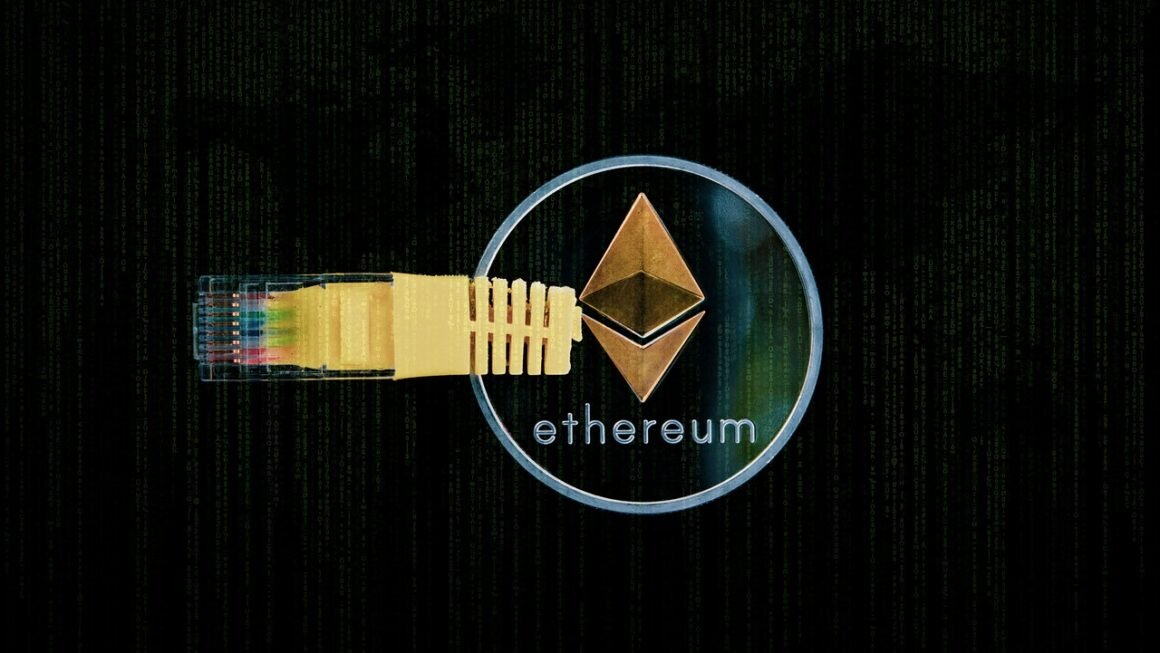The crypto market, a dynamic and ever-evolving landscape, has captured the attention of investors, tech enthusiasts, and policymakers alike. From its humble beginnings with Bitcoin to the explosion of diverse cryptocurrencies and decentralized applications (dApps), understanding the intricacies of this market is crucial for anyone looking to navigate its potential opportunities and inherent risks. This guide provides a comprehensive overview of the crypto markets, covering key aspects from market dynamics to investment strategies.
Understanding Crypto Market Dynamics
The crypto market operates differently from traditional financial markets. Its 24/7 availability, global reach, and decentralized nature contribute to its unique characteristics.
Volatility and Price Fluctuations
- Explanation: Cryptocurrency prices are known for their significant volatility. This is due to several factors, including market sentiment, regulatory news, technological advancements, and macroeconomic conditions. Unlike traditional markets with established regulatory frameworks, the crypto market is still relatively nascent, making it more susceptible to rapid price swings.
- Example: The price of Bitcoin can fluctuate by thousands of dollars within a single day, driven by news events or large-scale buy/sell orders. Similarly, smaller altcoins can experience even more dramatic price changes.
- Actionable Takeaway: Investors should be prepared for price volatility and consider employing risk management strategies such as diversification and stop-loss orders.
Market Sentiment and Social Media Influence
- Explanation: Social media platforms play a crucial role in shaping market sentiment. News, rumors, and opinions shared on platforms like Twitter, Reddit, and Telegram can significantly impact the prices of cryptocurrencies. “Fear of missing out” (FOMO) and “fear, uncertainty, and doubt” (FUD) are powerful forces in the crypto market.
- Example: A tweet from a prominent influencer or a negative news report about a specific cryptocurrency can trigger a sudden price drop.
- Actionable Takeaway: Stay informed about market sentiment by monitoring reputable news sources and social media, but always critically evaluate the information before making investment decisions.
Market Cycles and Trends
- Explanation: The crypto market tends to follow cyclical patterns, often characterized by bull runs (periods of sustained price increases) and bear markets (periods of sustained price decreases). Understanding these cycles can help investors time their entries and exits.
- Example: The crypto market experienced a significant bull run in 2017, followed by a bear market in 2018. Similarly, another bull run occurred in 2021. Analyzing historical price charts and market indicators can provide insights into potential future cycles.
- Actionable Takeaway: Study historical price charts and market indicators to identify potential market cycles. Be prepared to adjust your investment strategy based on the current market phase.
Key Cryptocurrencies and Tokens
The crypto market is populated by thousands of different cryptocurrencies and tokens, each with its own unique characteristics and use cases.
Bitcoin (BTC) – The Pioneer
- Description: Bitcoin is the first and most well-known cryptocurrency, often referred to as the “digital gold.” It operates on a decentralized blockchain network and is designed to be a store of value and a medium of exchange.
- Key Features: Decentralization, limited supply (21 million coins), and cryptographic security.
- Practical Example: Investors often use Bitcoin as a hedge against inflation or economic uncertainty.
Ethereum (ETH) – The Smart Contract Platform
- Description: Ethereum is a blockchain platform that enables the creation and execution of smart contracts and decentralized applications (dApps). It is the second-largest cryptocurrency by market capitalization.
- Key Features: Smart contract functionality, decentralized applications (dApps), and the Ethereum Virtual Machine (EVM).
- Practical Example: Many DeFi (decentralized finance) applications are built on the Ethereum blockchain, allowing users to lend, borrow, and trade cryptocurrencies without intermediaries.
Altcoins – Diversification and Innovation
- Description: Altcoins are cryptocurrencies other than Bitcoin. They range from utility tokens that provide access to specific services to stablecoins pegged to the value of fiat currencies.
- Examples:
Solana (SOL): A high-performance blockchain platform designed for speed and scalability.
Cardano (ADA): A proof-of-stake blockchain platform focused on sustainability and scalability.
Stablecoins (USDT, USDC): Cryptocurrencies pegged to the value of a fiat currency, such as the US dollar, providing stability in the crypto market.
- Actionable Takeaway: Diversifying your portfolio with a mix of established cryptocurrencies and promising altcoins can help mitigate risk and potentially increase returns. However, thorough research is crucial before investing in any altcoin.
Trading Strategies and Investment Approaches
Successful participation in the crypto market requires a well-defined trading strategy and investment approach.
Long-Term Investing (Hodling)
- Description: Hodling, a term derived from a misspelling of “holding,” involves buying and holding cryptocurrencies for the long term, regardless of short-term price fluctuations.
- Benefits:
Reduced stress from short-term volatility.
Potential for long-term capital appreciation.
Simplicity and ease of execution.
- Example: An investor who bought Bitcoin in 2013 and held it through subsequent bull and bear markets would have seen significant gains over the long term.
- Actionable Takeaway: Identify cryptocurrencies with strong fundamentals and long-term growth potential, and consider holding them for several years.
Short-Term Trading (Day Trading, Swing Trading)
- Description: Short-term trading involves buying and selling cryptocurrencies within a short time frame, such as a day or a few days, to profit from price fluctuations.
- Benefits:
Potential for quick profits.
Ability to capitalize on short-term market trends.
Flexibility to adapt to changing market conditions.
- Requirements: Requires technical analysis skills, knowledge of market trends, and a disciplined approach to risk management.
- Example: A day trader might buy Bitcoin in the morning and sell it in the afternoon to profit from intraday price movements.
- Actionable Takeaway: Short-term trading requires a significant investment of time and effort. Only engage in short-term trading if you have the necessary skills and experience.
Dollar-Cost Averaging (DCA)
- Description: Dollar-cost averaging involves investing a fixed amount of money in a cryptocurrency at regular intervals, regardless of the price.
- Benefits:
Reduces the impact of volatility on your investment.
Simplifies the investment process.
Allows you to accumulate assets over time.
- Example: An investor might invest $100 in Bitcoin every week, regardless of the current price. Over time, this strategy can help reduce the average cost per Bitcoin.
- Actionable Takeaway: Dollar-cost averaging is a simple and effective strategy for long-term investing in volatile assets like cryptocurrencies.
Navigating Risks and Security
Investing in the crypto market comes with inherent risks, including price volatility, security threats, and regulatory uncertainty.
Security Risks and Best Practices
- Types of Risks:
Hacking: Cryptocurrency exchanges and wallets are vulnerable to hacking attacks.
Phishing: Scammers use phishing techniques to steal private keys and access cryptocurrency wallets.
Fraud: Ponzi schemes and other fraudulent activities are prevalent in the crypto market.
- Best Practices:
Use strong passwords: Create strong, unique passwords for all your cryptocurrency accounts.
Enable two-factor authentication (2FA): Add an extra layer of security to your accounts by enabling 2FA.
Store cryptocurrencies in cold storage: Store a significant portion of your cryptocurrencies in offline wallets (cold storage) to protect them from hacking attacks. Hardware wallets are recommended.
Be wary of phishing scams: Be cautious of suspicious emails, messages, and websites that ask for your private keys or personal information.
Research projects thoroughly: Before investing in any cryptocurrency, conduct thorough research to understand its technology, team, and potential risks.
- Example: Using a hardware wallet like Ledger or Trezor to store your Bitcoin offline significantly reduces the risk of being hacked.
- Actionable Takeaway: Prioritize security by implementing strong passwords, enabling 2FA, storing cryptocurrencies in cold storage, and being wary of phishing scams.
Regulatory Landscape and Compliance
- Explanation: The regulatory landscape for cryptocurrencies is still evolving. Different countries have different approaches to regulating cryptocurrencies, ranging from outright bans to supportive frameworks.
- Impact: Regulatory developments can significantly impact the prices and adoption of cryptocurrencies.
- Actionable Takeaway: Stay informed about regulatory developments in your jurisdiction and comply with all applicable laws and regulations. This includes paying taxes on cryptocurrency gains.
Understanding Market Manipulation
- Explanation: The relatively unregulated nature of some crypto exchanges can make them susceptible to market manipulation, such as pump-and-dump schemes and wash trading.
- Warning Signs:
Sudden and unexplained price spikes.
High trading volumes with little or no fundamental justification.
* Social media hype and coordinated buying activity.
- Actionable Takeaway: Be cautious of cryptocurrencies with limited liquidity and questionable fundamentals. Avoid participating in pump-and-dump schemes, as they are often unsustainable and can result in significant losses.
Conclusion
Navigating the crypto markets requires a blend of knowledge, strategy, and risk management. By understanding the market dynamics, key cryptocurrencies, trading strategies, and security risks, investors can make informed decisions and potentially achieve their financial goals. However, it’s crucial to remember that the crypto market is inherently volatile and unpredictable, so always invest responsibly and never invest more than you can afford to lose. Continuous learning and adaptation are key to success in this dynamic and evolving landscape.



